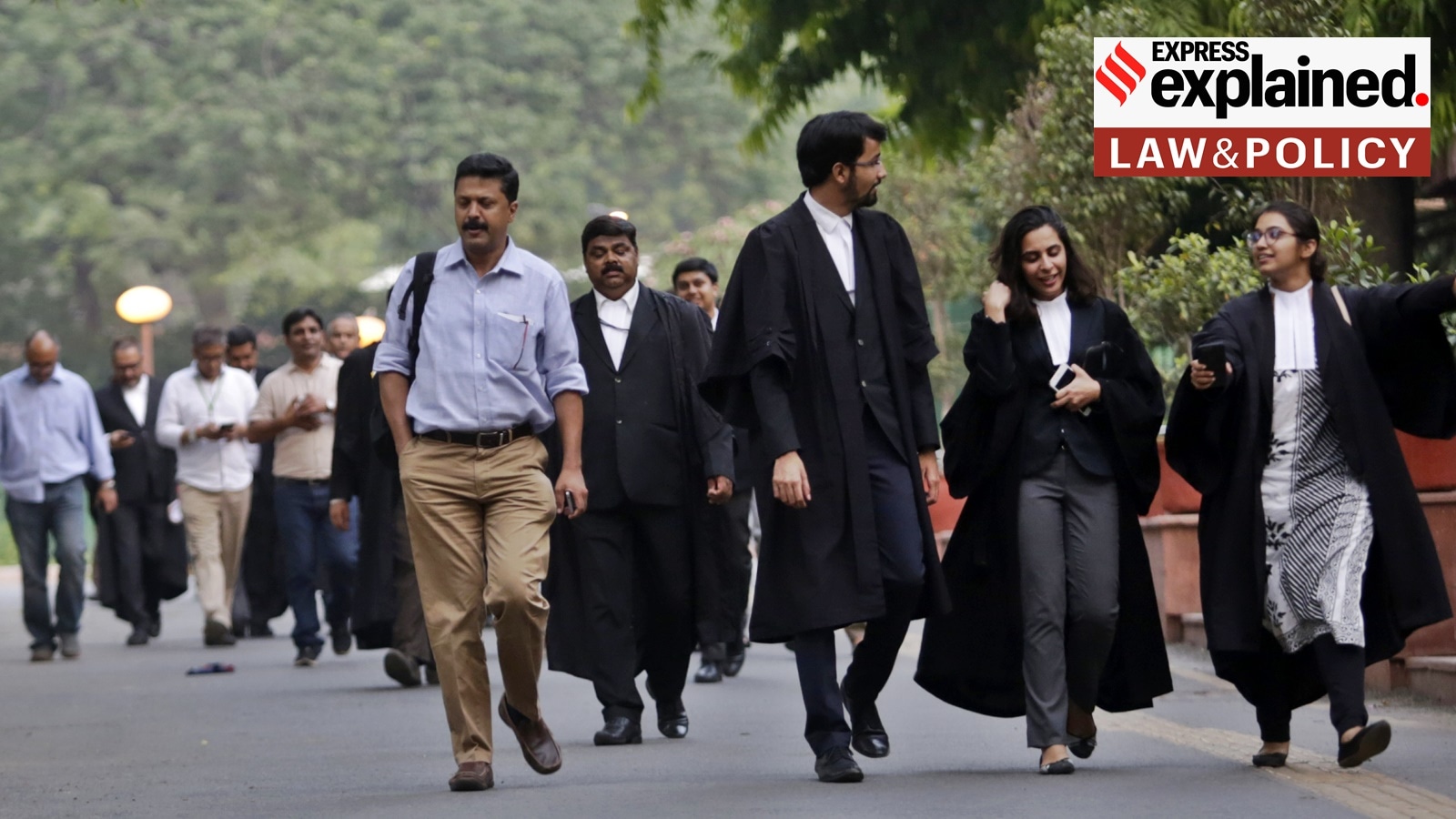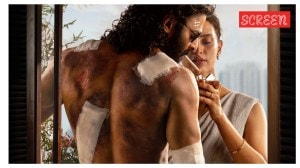What is the dress code for advocates and when can it be relaxed?
Notices and circulars announcing a relaxation in the dress code for advocates practising in the subordinate judiciary have become a regular occurrence. They are usually issued with the onset of summers across the country.
 Advocates at the Supreme Court in New Delhi. (Express photo by Praveen Khanna)
Advocates at the Supreme Court in New Delhi. (Express photo by Praveen Khanna)The Karnataka High Court issued a circular on Tuesday (April 16) exempting advocates practising at District and Trial courts from wearing a black coat while attending court proceedings during the summer months of May and the rest of April. This comes as a reprieve for advocates in the sweltering heat who are often “on their legs” — a popular phrase among advocates, meant to communicate rapid transit between different courts and courtrooms.
Notices and circulars announcing a relaxation in the dress code for advocates practising in the subordinate judiciary have become a regular occurrence. Their release tends to coincide with the onset of summer across the country.
Though the dress code remains strictly enforced in the higher judiciary (Supreme Court and High Courts), recently these rules have been relaxed on some occasions, and attempts have been made to change the dress code.
What laws govern advocates’ dress code?
Under the Advocates Act, 1961, the Bar Council of India is empowered to prescribe rules on “the form of dresses or robes to be worn by advocates, having regard to the climatic conditions, appearing before any court or tribunal”. The Bar Council of India Rules, 1975 (BCI Rules), contain dress code rules to ensure that advocates appear “sober and dignified”.
Men are required to wear a black gown — known as advocates’ gown — over their black coat, except the interns, when arguing before the Supreme Court, High Courts, Subordinate Courts, and Tribunals. They also need to wear trousers (white, black striped or grey) or a dhoti, and either “a black buttoned up coat, chapkan, achkan, black sherwani and white bands” or “a black open breast coat, white shirt, white collar, stiff or soft, and white bands”.
Women are required to wear either “black full sleeve jacket or blouse, white collar stiff or soft, with white bands and Advocates’ Gowns. White blouse, with or without collar, with white bands and with a black open breast coat.” or “Sarees or long skirts (white or black or any mellow or subdued colour without any print or design) or flare (white, black or black stripped or grey) or Punjabi dress Churidar Kurta or Salwar-Kurta with or without dupatta (white or black) or traditional dress with black coat and bands.”
The gowns are optional outside of the Supreme Court and High Courts and the black coat is not mandatory during the summer months except at the Supreme Court and High Courts.
Under what circumstances the dress code has been relaxed?
With the Advocates Act itself dictating that a black coat is not mandatory during the summer months, notices and circulars are often issued which clarify the time frame for this relaxation. On March 14, 2023 for instance, the Bar Council of Andhra Pradesh issued a circular stating “wearing of Black Coat is not mandatory in Subordinate Courts, during summer” and clarified that this would apply from March 15 to July 15 every year.
Despite being a direct contravention of the rules under the Advocates Act, High Courts generally issue notifications stating that advocates are not required to wear their gowns while practising before them during the summer months. In 2023 the Kerala, Punjab & Haryana, Jammu & Kashmir, and Calcutta High Courts, among others, allowed advocates to appear without a gown during the summer months.
The Delhi High Court has routinely relaxed the requirement for advocates to wear a gown while practising before it. The first circular, which exempted wearing a gown, came out in May 2020 — the Delhi HC said this was done to “contain the spread of COVID-19”. In the following circulars, however, the court made the exemption due to summer months.
In May 2020, the Supreme Court also allowed advocates to appear over video conferencing without a gown, and a couple of days later exempted advocates from “wearing heavy upper body clothings like coat, chapkan, achkan, sherwani, gown and jacket”.
The apex court also briefly heard a plea in 2021 filed by Advocate Shailendra Mani Tripathi, who sought an amendment to the BCI Rules to exempt advocates from wearing black coats and gowns during the summer months at the Supreme Court and High Courts. However, the plea was dismissed in July 2022 and Tripathi was asked to make a representation to the Bar Council of India instead.
- 01
- 02
- 03
- 04
- 05






































